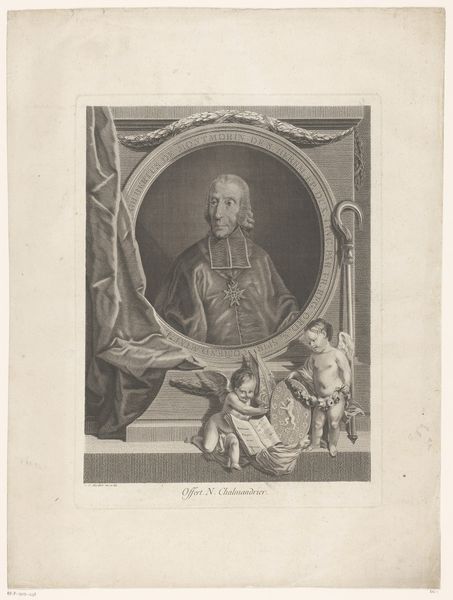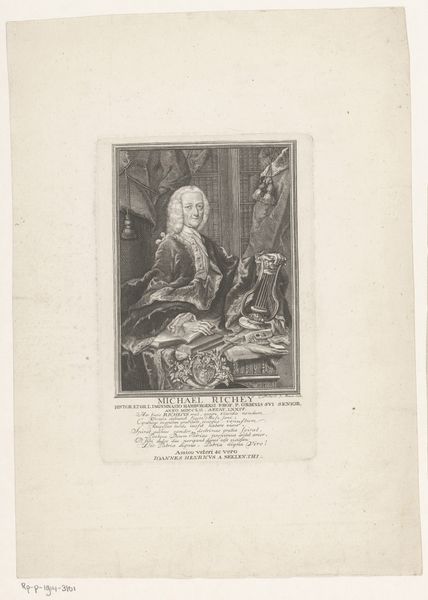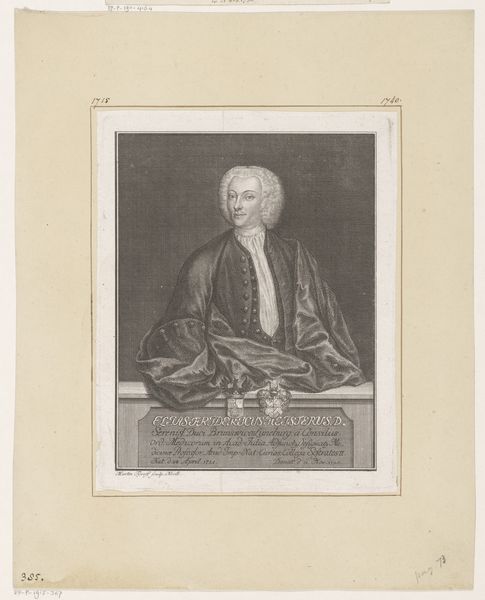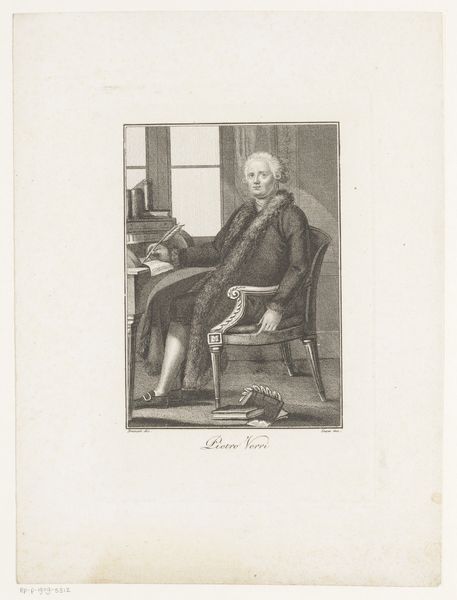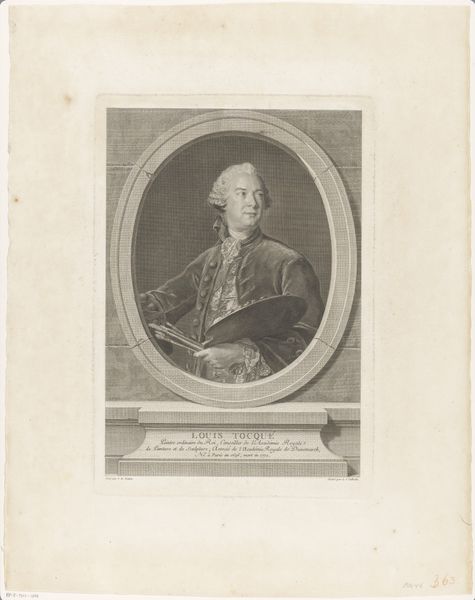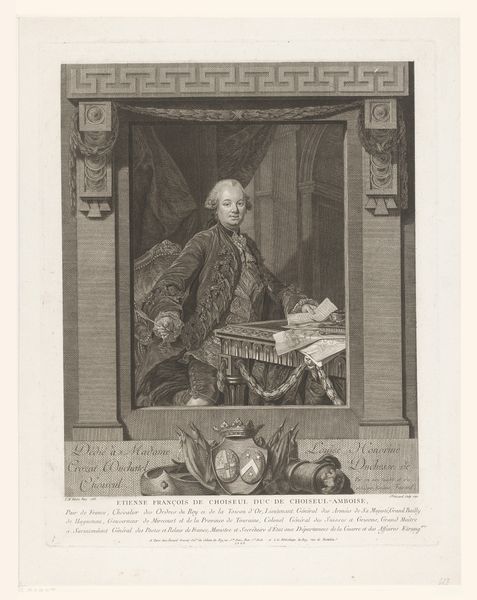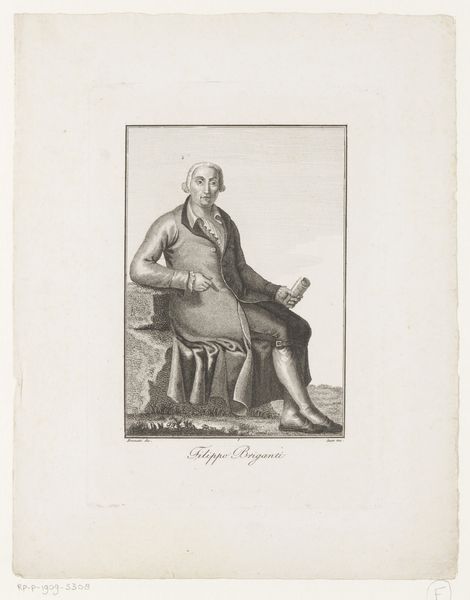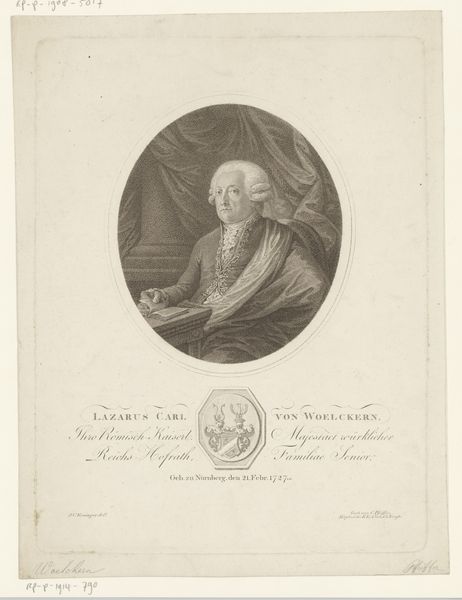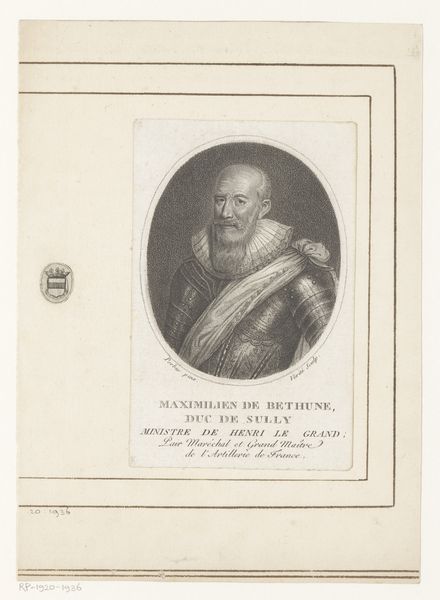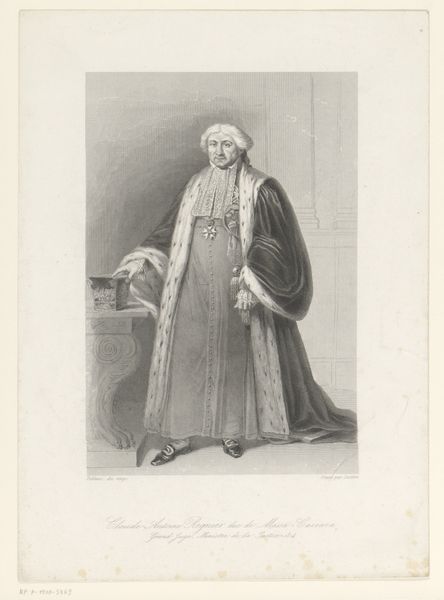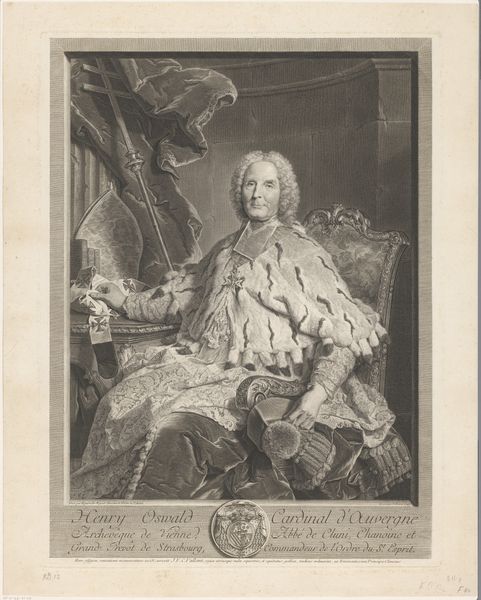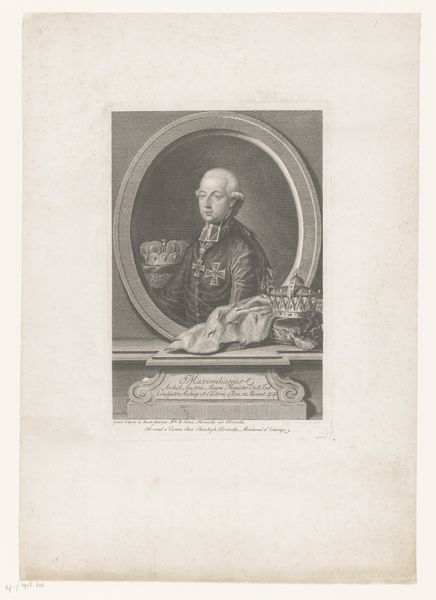
print, engraving
#
portrait
# print
#
history-painting
#
academic-art
#
engraving
Dimensions: height 513 mm, width 349 mm
Copyright: Rijks Museum: Open Domain
Curator: Let's turn our attention to this engraving: "Portret van Joseph Marie Terray," dating from 1777. It’s the work of Louis Jacques Cathelin. Editor: My first impression is of formality, of careful delineation. The figure is rendered in remarkable detail, almost obsessively so; and the light and shadow define every fold in the garment, every line on the face. Curator: Indeed, Cathelin’s approach reflects a precise academic style, characteristic of portraiture at the time. The use of engraving, a print medium, enabled a widespread distribution of Terray's image. Structurally, observe the pyramidal composition. The figure occupies the upper space, anchoring the viewer's gaze and leading towards the face. Editor: The symbols around him also offer insights: his elaborate robes, the documents scattered across his desk. Notice how they reinforce Terray’s image as a man of importance and influence within his time. He embodies a sort of divine authority – even secular. Curator: The textural contrasts, especially between the smooth face and the patterned fabrics, further enrich the image's surface, adding visual interest and reinforcing the figure's prominence within the composition. Editor: There’s almost a sense of him acting, as if aware of how he might look to the audience of his own era. These trappings served a symbolic function, to broadcast not only the sitter's position but an implicit set of virtues deemed essential to that office. Curator: An astute observation. By attending to the structural elements of light, texture, and composition, we understand Cathelin's adept handling of visual rhetoric and academic art principles. Editor: Examining these details allows a broader perspective, seeing portraiture as a rich terrain filled with signifiers of its era, shaping how both sitters and viewers approached questions of power, legacy, and presentation. Curator: Quite right, the confluence of semiotics, structure, and composition offers a richer analysis. Editor: Indeed. And understanding the coded imagery transports us beyond mere visual appreciation, deep into the cultural arteries of 18th-century France.
Comments
No comments
Be the first to comment and join the conversation on the ultimate creative platform.
